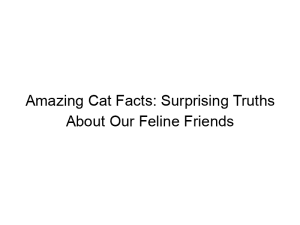Have you ever watched your feline companion rhythmically push their paws into a soft surface, their little feet making a gentle kneading motion? This adorable behavior, often accompanied by purring, is known as kneading, and it’s a question that fascinates cat owners everywhere. Why do cats knead? This comprehensive guide delves into the fascinating science behind this endearing habit, exploring its origins, variations, and significance in feline behavior. We’ll explore everything from the instinctive roots of kneading to its potential connection to comfort and bonding. Get ready to uncover the meaning behind this adorable habit!
Kneading, also known as “making biscuits,” is a behavior where cats rhythmically push their paws into a soft surface like blankets, pillows, or even their human’s laps. It involves a series of pushing and releasing movements, often accompanied by purring
and a contented expression. The action involves extending and retracting their claws, which can sometimes leave gentle imprints.
The Evolutionary Roots of Kneading: Kittens and Survival
The behavior’s origins trace back to kittenhood. Kittens knead their mothers’ bellies to stimulate milk flow during nursing. This instinctive action is essential for survival, ensuring they receive adequate nourishment. This ingrained behavior persists into adulthood, although the purpose may shift.
Kneading as a Sign of Comfort and Contentment
For adult cats, kneading often serves as a powerful indicator of comfort and contentment. The rhythmic motion can be incredibly soothing, releasing endorphins and promoting relaxation in both the cat and the human recipient of this affectionate behavior. A cat kneading on your lap is usually a sign of deep trust and affection.
Scent Marking: Leaving a Familiar Mark
Cats possess scent glands in their paws. When they knead, they release these pheromones, marking the territory as familiar and safe. This is a subconscious behavior that can be viewed as a form of self-soothing and territorial marking.
The Significance of Soft Surfaces
The choice of surface is critical. Cats generally prefer soft surfaces for kneading, mimicking the comfort and warmth of their mother’s fur. The soft texture provides sensory feedback that enhances the experience, reinforcing the positive associations with comfort and security.
Individual Variations in Kneading
Not all cats knead with the same intensity or frequency. Some cats knead frequently, while others may only do so occasionally. Individual personalities, experiences, and preferences can significantly influence the expression of this behavior. Factors such as breed, temperament, and upbringing all play a role.
Kneading and Stress Relief
Many cat owners report that their cats knead more frequently during times of stress or anxiety. Kneading can serve as a self-soothing mechanism, helping the cat regulate emotions and regain a sense of calm and security. It’s their way of coping with stressors.
Kneading and Bonding: Strengthening the Human-Feline Bond
For cat owners, witnessing their cat knead is incredibly rewarding. It’s a clear manifestation of trust and affection, symbolizing the strong bond between human and feline. It’s a special moment that strengthens the relationship.
Interpreting Different Kneading Styles
The intensity and context of the kneading can provide further insight into your cat’s emotional state. Gentle kneading often suggests contentment, while vigorous kneading might indicate excitement or even mild anxiety. Pay attention to your cat’s overall body language.
Kneading and Other Behaviors: Purring, Slow Blinking, and More
Kneading often occurs alongside other affectionate behaviors such as purring and slow blinking. These actions, taken together, reinforce the positive associations with comfort, contentment, and trust. It’s a combination of love language.
Understanding Your Cat’s Kneading: A Holistic Approach
To fully understand your cat’s kneading, consider the context. Pay attention to their overall demeanor, surrounding environment, and other behaviors they exhibit alongside kneading. This holistic view provides a more accurate interpretation of their emotional state.
Myths and Misconceptions about Cat Kneading
Several misconceptions surround cat kneading. For instance, some believe it’s always a sign of complete contentment, while others associate it with aggressive behavior. Understanding the nuances helps avoid misinterpretations.
How to Encourage or Discourage Kneading
While kneading is generally harmless and positive, you might want to discourage it if it damages furniture. Providing alternative soft surfaces can redirect the behavior. Positive reinforcement, like offering treats or petting, can further encourage positive associations.
When to Seek Veterinary Attention
While usually benign, changes in kneading frequency or intensity can sometimes signal underlying health issues. If you notice significant changes in your cat’s behavior, consult your veterinarian.
Comparing Kneading to Other Feline Behaviors
Understanding kneading requires comparing it with other feline behaviors. This comparison illuminates the nuances of communication and expression within the feline world.
The Science Behind the Knead: Neurological Aspects
Scientific research is exploring the neurological underpinnings of kneading. This research delves into the brain pathways and hormonal influences involved in this behavior.
Kneading Across Cat Breeds
Certain breeds might exhibit kneading more frequently than others. This highlights the interaction between genetics and individual expression of this behavior.
Frequently Asked Questions
What does it mean when my cat kneads on my lap?
When your cat kneads on your lap, it’s typically a sign of deep affection, comfort, and trust. They’re associating you with the comforting feeling of their mother’s warmth and are essentially expressing their love and contentment.
Is kneading harmful to my cat?
Kneading itself is not harmful to your cat. However, if they’re using their claws excessively, it could scratch your furniture or skin. Trimming their claws can minimize this risk.
Why does my cat knead on blankets and pillows?
Blankets and pillows offer soft, familiar textures that mimic the experience of nursing. Cats associate this feeling with comfort and security, leading them to knead on these surfaces.
My cat kneads excessively – is something wrong?
Excessive kneading can sometimes indicate underlying anxiety or stress. Observe your cat’s overall behavior. If it’s accompanied by other concerning signs, consult your vet.
Can kittens knead?
Yes, kittens begin kneading very early in life, as a crucial part of nursing from their mother. This is an instinctive behavior ensuring proper feeding.
Final Thoughts
Understanding why cats knead unlocks a deeper appreciation for their endearing behavior. It’s a fascinating blend of instinct, emotion, and communication, revealing the complex inner world of our feline companions. From the survival instincts of kittens to the comforting rituals of adult cats, kneading embodies the rich tapestry of feline behavior. This gentle act strengthens the bond between humans and cats, serving as a testament to the enduring power of love and trust in the animal kingdom. Next time your cat begins their rhythmic kneading, take a moment to appreciate the profound meaning behind this adorable habit. It’s more than just a cute quirk; it’s a glimpse into the heart of your furry friend.




